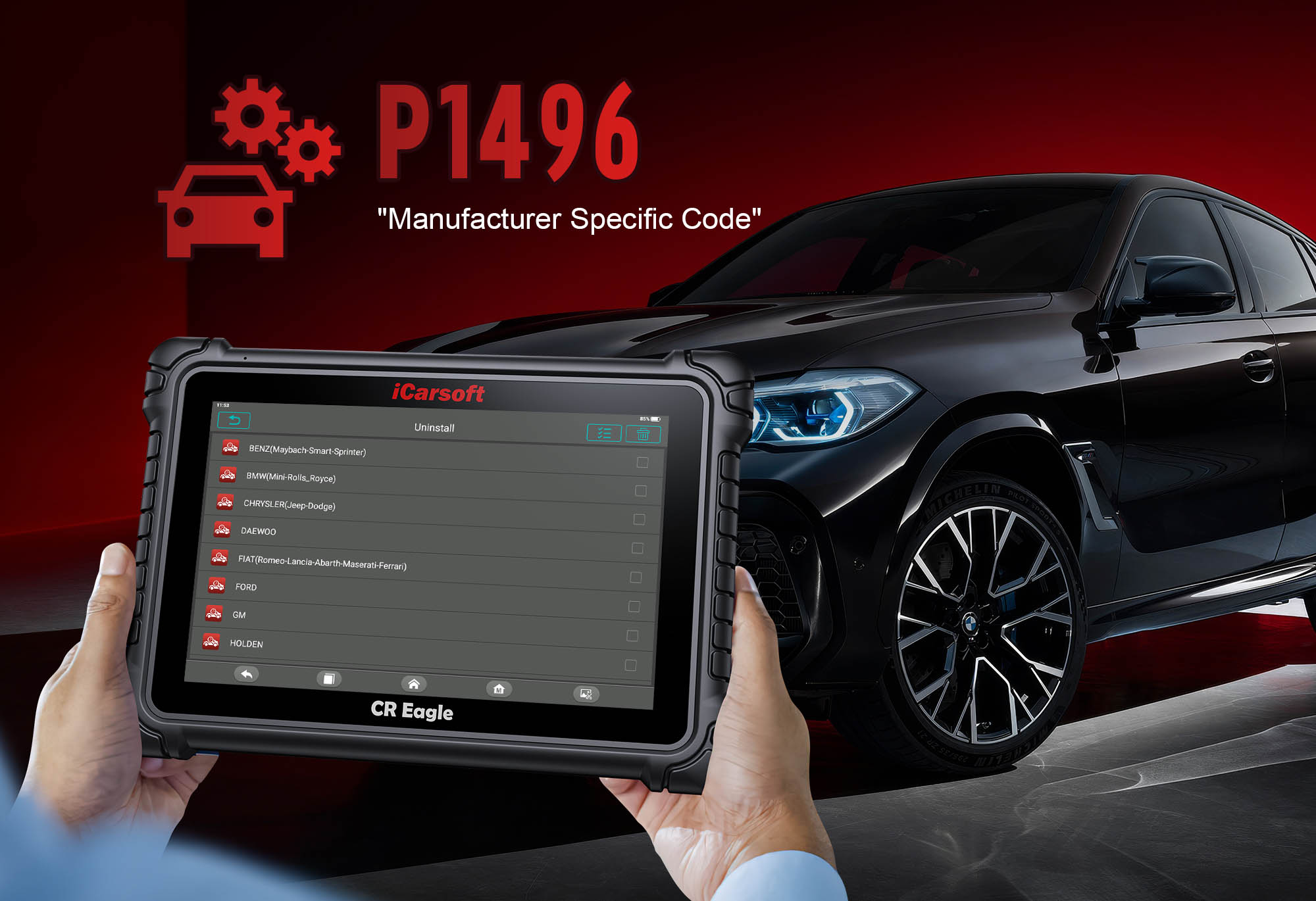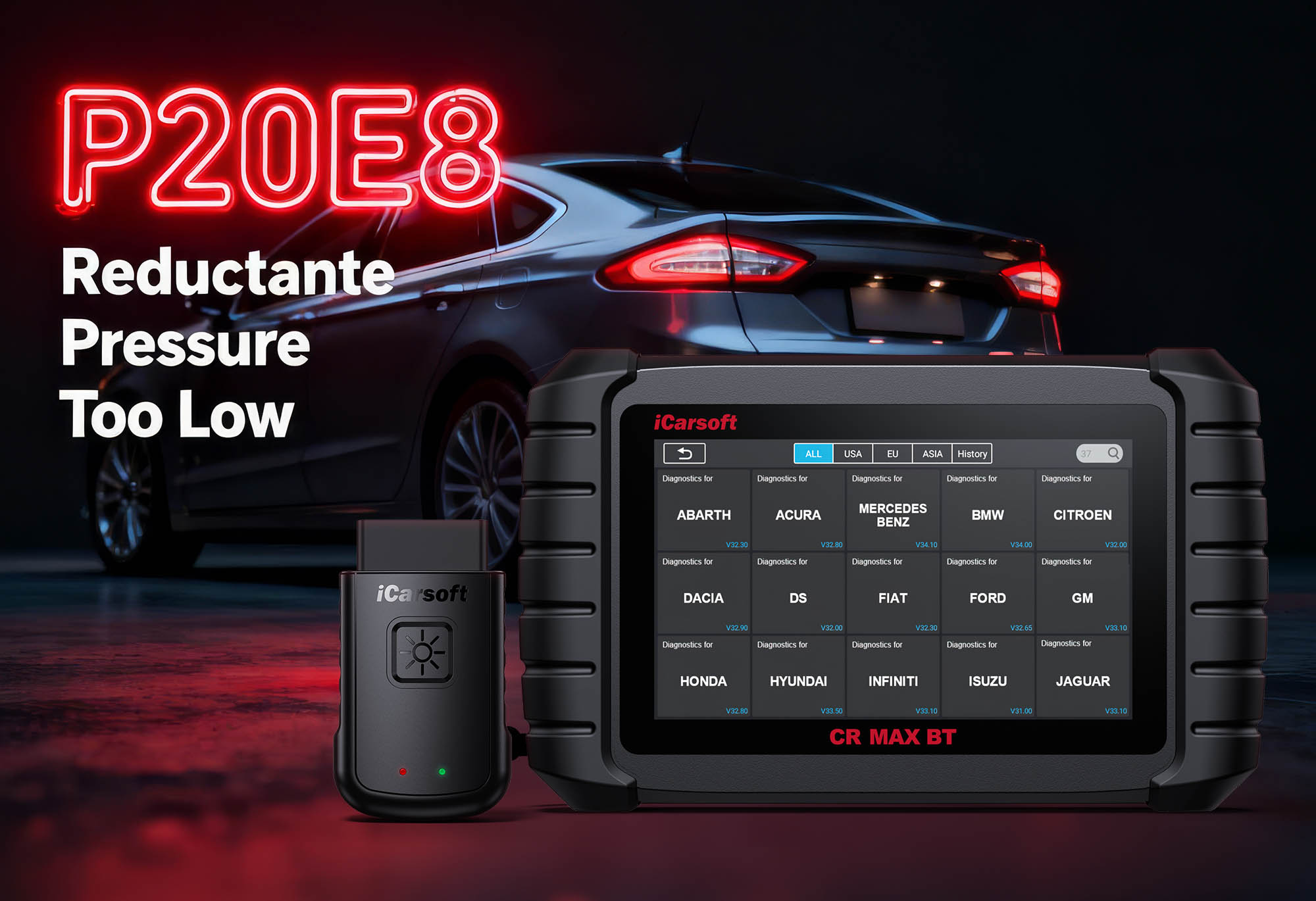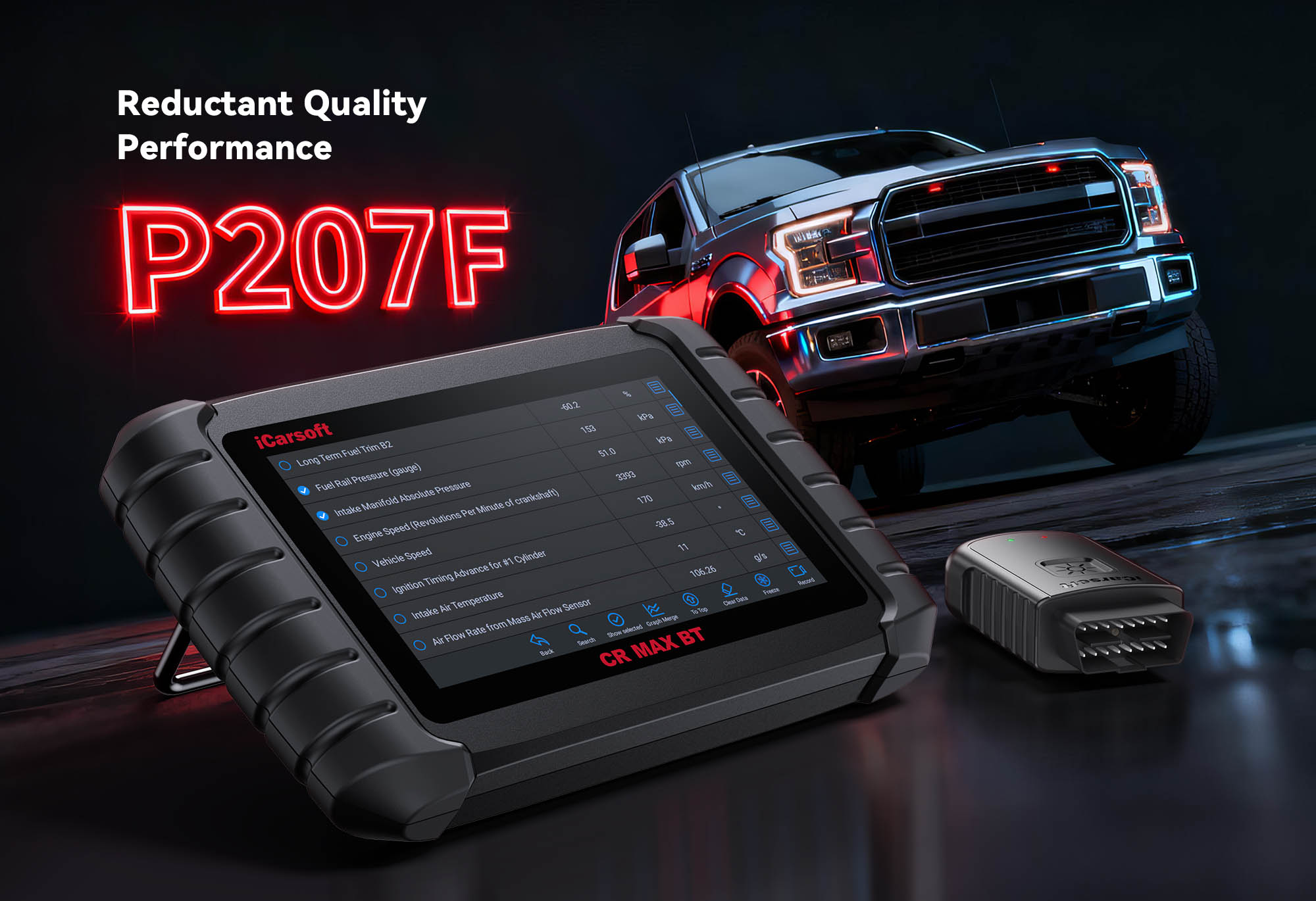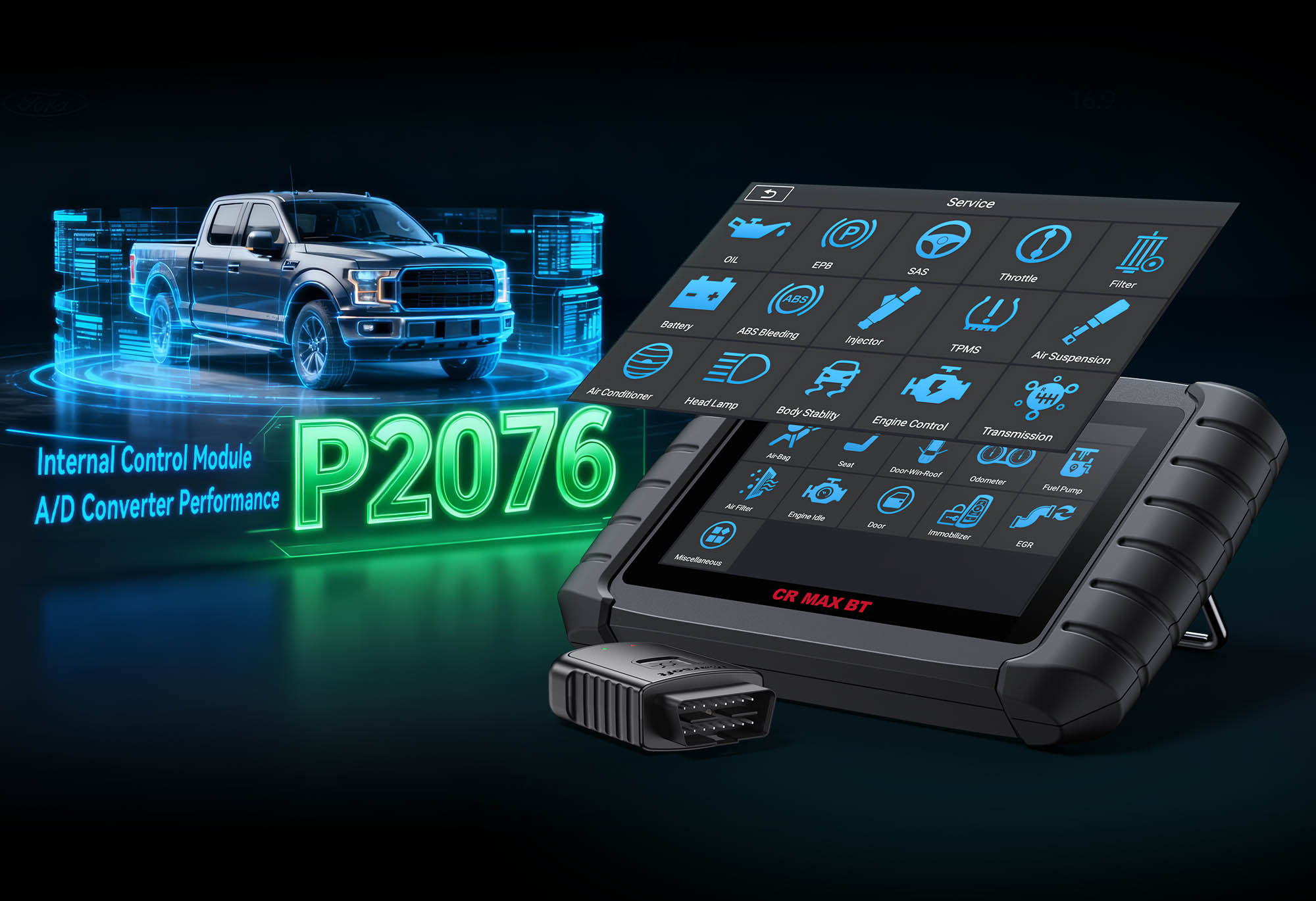The Ultimate Guide to Diagnosing and Fixing P1496 EGR Valve Circuit Code (For Subaru, VW, Kia & More)
If your scan tool flashes that dreaded P1496 code, you’re facing a critical EGR valve circuit malfunction—one that can cripple engine performance, spike emissions, and turn a smooth drive into a rough ride. As a professional diagnostic tool provider, iCarsoft decodes this complex error for mechanics and DIYers alike. Let’s demystify P1496 and get your engine breathing right again.
What Does P1496 Mean?
P1496 is an OBD-II trouble code signaling a fault in your vehicle’s EGR (Exhaust Gas Recirculation) system. While its exact definition varies slightly by manufacturer, the core issue remains consistent:
-
Subaru: “EGR Solenoid Signal #3 Circuit Low Voltage” – indicating voltage drops in the solenoid’s control circuit.
-
VW/Audi/Skoda/Seat: “EGR Radiator Valve – Short to Positive” – pointing to a short circuit in the EGR cooler valve wiring.
-
Kia/Mazda: “EGR Valve Coil 1 – Short/Open Circuit” – highlighting electrical breaks or shorts in the valve coil.
At its heart, P1496 disrupts the EGR’s role in reducing combustion temperatures and cutting nitrogen oxide (NOx) emissions by recirculating cooled exhaust gases.
Why the EGR System Matters (And Why P1496 Hurts Performance)
Your EGR system isn’t just an emissions gadget—it’s a performance safeguard. It comprises two critical components:
-
The EGR Cooler: Cools exhaust gases using engine coolant to prevent overheating.
-
The EGR Valve: Precisely meters cooled exhaust gas into the intake manifold to lower combustion temperatures by up to 300°F.
When P1496 strikes, this system fails. Raw, uncooled exhaust gas enters the engine—or flow stops entirely. Consequences include:
-
Rough idling and poor acceleration due to incorrect air-fuel ratios.
-
Increased fuel consumption as the ECU struggles to compensate.
-
Overheating risk from uncontrolled combustion temps.
Top Causes of P1496
Based on diagnostic data from iCarsoft tools, these are the most frequent culprits:
|
Cause
|
Description
|
Frequency
|
|
Faulty EGR Solenoid/Valve
|
Internal coil shorts or opens fail to regulate exhaust flow; carbon buildup jams valve movement.
|
50% of cases
|
|
Damaged Wiring or Shorts
|
Chafed wires grounding against the engine block; corroded connectors near the EGR cooler (exposed to heat/coolant).
|
30% of cases
|
|
Sensor or ECU Issues
|
MAP/TP sensors fed by a failing 5V reference circuit (common in Mitsubishi); software glitches in the Engine Control Unit (ECU).
|
15% of cases
|
|
Cooler Leaks or Blockages
|
Coolant leaks from corroded EGR coolers disrupt gas cooling; blockages prevent proper gas flow.
|
5% of cases
|
Diagnosing P1496 Like a Pro
Stop guessing—follow this systematic approach:
-
Scan & Document
Use an advanced scan tool (like the iCarsoft CR Eagle) to confirm P1496 and check live data for EGR valve position discrepancies. Note manufacturer-specific details for your vehicle make.
-
Visual Inspection
Trace wiring from the EGR valve to the ECU. Look for melting, corrosion, or loose plugs. Inspect the EGR cooler for coolant leaks or soot buildup that indicates blockages.
-
Electrical Tests
Voltage Check: Measure the solenoid’s supply voltage (typically 12V). Resistance Test: Unplug the valve and test coil resistance. Out-of-spec readings (varies by manufacturer) indicate a faulty valve.
-
Component Verification
Apply 12V directly to the EGR valve. If it doesn’t click, it’s dead. Smoke-test the EGR system to rule out vacuum leaks that mimic circuit faults.
Fixes That Work (and One to Avoid)
✅ Recommended Solutions:
-
Replace Faulty EGR Components: Swap damaged solenoids, valves, or coolers using OEM-grade parts. Torque mounting bolts to 57±11 N•m to prevent leaks.
-
Repair Wiring: Solder and heat-shrink damaged wires to restore conductivity. Use dielectric grease on connectors to prevent corrosion from heat and moisture.
-
Update ECU Software: Resolve phantom codes with a dealer reflash, especially for VW/Audi models prone to software glitches.
⛔ The “EGR Delete” Trap:
Blocking the EGR might seem like a quick fix, but it’s a time bomb:
-
Turbocharger RPMs can exceed safe limits (100,000+ RPM), causing premature failure.
-
Engine sensors feed inaccurate data to the ECU, risking long-term damage to pistons and valves.
-
Illegal in most regions due to emissions regulations—fines can exceed $1,000.
Clear the Code Correctly
Never just disconnect the battery! This can wipe adaptive memory, causing poor drivability and triggering anti-theft locks (e.g., radio codes). Instead:
-
Fix the root cause of the P1496 code.
-
Use a professional scan tool like the iCarsoft CR Eagle to clear codes.
-
Verify repairs with an extended test drive (20+ miles) under varying conditions.
Why the iCarsoft CR Eagle is Your P1496 Solution
For accurate diagnosis and reset capabilities, the CR Eagle stands out:
Deep Manufacturer Coverage
Accesses OEM-level codes for Subaru, VAG (VW/Audi), Kia, and Mazda—critical for decoding brand-specific P1496 variations.
Live Data & Actuation Tests
Command the EGR valve to open/close and monitor response in real time, pinpointing mechanical vs. electrical faults.
One-Click Reset
Safely clear P1496 after repairs—no lost radio codes or ECU adaptive memory issues.
Component Location Guides
Detailed diagrams show EGR valve and wiring locations specific to your vehicle model, reducing diagnostic time.
FAQ
Q: Can I drive with P1496?
A: Short trips only. Long-term neglect risks engine damage (overheating, piston wear) and failed emissions tests.
Q: Why does P1496 keep coming back?
A: Incomplete fixes—like cleaning a valve but ignoring corroded wiring, or using low-quality replacement parts that fail quickly.
Q: Is P1496 specific to diesel engines?
A: No, but diesel EGR systems face higher soot loads, accelerating carbon buildup and valve sticking—making P1496 more common in diesels.
For faster diagnostics on Subaru Outbacks, VW TDIs, or Kia Sorentos, equip your shop with the iCarsoft CR Eagle—your key to mastering tough codes like P1496.





